#Precise Fit
Explore tagged Tumblr posts
Text

bro what if we fit together like puzzle pieces bro what if we just lay down and like test it out bro you never know
#i admit that the bumps in their noses fit together much more precisely before things shifted in paint#but oh well it’s the thought that matters i think???#aftg#tsc#jerejean#jean moreau#jeremy knox
9K notes
·
View notes
Text

Durable and Corrosion-Resistant Stainless Steel 304 Pipe Fittings for Reliable and Efficient Fluid Handling in Diverse Industrial Applications
Our Stainless Steel 304 Pipe Fittings provide reliable and corrosion-resistant connections for various piping systems. Suitable for applications such as food processing, chemical processing, and water treatment, these fittings ensure a precise fit and long-lasting service. Available in multiple sizes and configurations, they meet the demands of projects requiring efficient fluid handling solutions.
#Stainless Steel 304#Pipe Fittings#Corrosion Resistance#Piping Systems#Food Processing#Chemical Processing#Water Treatment#Precise Fit#Long-Lasting Service#Fluid Handling Solutions
0 notes
Text

Hermit a Day May; Day 17, Ren, The- the Beast. We will find a way to get you back to normal, Ren.
His full portrait without the background:

This AU has come to life because of Hermit a Day May, who are running a fundraiser! If you like my work, please check it out! Check it out here!
#A very simple one for today! I'm so sorry about that.#I've simply been super busy with college#so I couldn't do anything super extragavant or precise today. Luckily it fits his theme to be so... abstructed.#hermitblr#artist#hermitcraft s10#artists on tumblr#hermitcraft fanart#fanart#hermitcraft smp#art#hermitcraft#hades hermits#hadm#hermitaday#hermitadaymay#hermit a day may#hermitcraft season 10#hermitcraft 10#hadm 2025#rendog#ren the dog#renthedog#rendog fanart#rendog hermitcraft#ren the dog fanart#hermitcraft rendog#treebark
260 notes
·
View notes
Text

I'm alive, istg, and trying to love drawing again so I had to draw my BOY! My son, even. I think it's neat if there's some Viltrumite weirdness, so obligatory sharper teeth + the weird glow affect you can see some animals' eyes. I think Debbie should be vibing downstairs only to get jumpscared by the new set of glowing eyes coming down the stairs for some water. Bonus points if Mark starts floating around, and thus has no footsteps.
#the brainrotsreal's art tag ✧˖°:*♡#make viltrumites a lil werid#humans got some werid genetic stuff going on anyway#viltrumites are still omnivores obliviously but maybe they've got some sharper/hook-like teeth down the line#and ofc all the viltrumites willing to bite a mf + has hook/sharper teeth prob pass that down after that whole purge thing#not pretending i know genetics precisely but i am saying i think it's neat!#i keep trying to draw kate in a new fun way and then i dont draw for a week lol it's hard to make her fit my style explorations ..#while still looking like herself? i hate her haircut sm istg#invincible mark grayson#fanart#invincible fanart
167 notes
·
View notes
Text
Ghost Chirps AU Part 5
Part 1 & 2
Part 3
Part 4
***
While “Jason” (i.e. Alfred with an empty jet that Jason will meet up with later in order to “arrive” in Amity) hops a private jet, Red Hood is busy searching the Fenton home from top to bottom.
The local police move slowly, and by the time they arrive Jack and Maddie Fenton are both tied up and disarmed in their living room under heavy guard.
They hadn’t been restrained immediately, Batman talking him into giving them a chance to implicate themselves first.
Hood let him take the lead, but he didn’t even get a chance to ask a question, being cut off at the first indication he might want to talk about their “work.” Less than 60 seconds in, and the pair had outright confessed to violating the meta protection acts - and in tedious detail.
The questioning didn’t suffer any from them being tied up.
Far from the mulish silence or crocodile-tear laden denial of most criminals, they instead doubled down, insisting that nothing they had done was illegal, then jumping to the assumption that they were “possessed” - and boy had it been a nasty surprise when the whole house came alive trying to attack them with a quick verbal command.
Well, trying to attack Hood. And only him, for some reason.
One laser also freed the Fentons, who turned out to have even more weapons built into their suits.
Somehow.
Despite them being skintight.
That had been a pain, but Red Robin was able to hack the system using one of the couples’ own devices while Hood dodged - and kept the stray fire away from the others - leaving everyone else to recapture the pair. A blessedly simple task once they found out the lasers would splash harmlessly off of their armor (save for a gross film of green goop left wherever they grazed).
They take turns knocking each unconscious to change them in order to properly disarm them - Batman and Nightwing taking Jack first, followed by Orphan and Spoiler dealing with Maddie.
The only non-weapon laden clothing they own turns out to be pajamas.
This is around when the police show up, looking hesitant.
They, too, cite the “Anti-Ecto Acts.”
Oracle had debriefed them on the supposed Acts and “Ghost Investigation Ward” on their short drive over. Both were utterly bogus - the Acts had never even been proposed, let alone been approved as law, and the so-called “GIW” had no ties to the government.
The Fentons had been furious and denied the information intensely when told, but the cops mostly just looked relieved.
Apparently there’d been a lot of property damage by the GIW and Fentons both that had supposedly been dismissed under the Acts as “necessary in the pursuit of ecto-scum.”
For the Fentons, half of this damage was in the form of broken fire hydrants, cracked sidewalks, and totaled cars - they’d never been good drivers, before, the cops disclosed, but they’d become even more negligent since the ghosts began appearing, to the point they had to have a news segment warning when they would be on the road.
The lack of fatalities thus far had been nothing short of a miracle, they claimed.
“Of course there haven’t been any fatalities!” Mrs Fenton defends. “Our work is to protect people from those things, not make more! Officers, listen to reason-” Hood snorts disdainfully -”The Red Hood is clearly a ghost! All our systems targeted him the moment they came online - and they only target ecto-entities. He’s clearly taken these heroes under his sway - why else would they be working with a murderer!? You have to do something before he starts up his killing here in Amity!”
The officers look at him a bit hesitantly, but Batman is unmoved and gives the cover story Hood had outlined back in the alley.
Any concerns the locals have are quickly assuaged.
But for the whole explanation, Jason is trying not to shake even as he falls apart in place.
Their little website called them ghost-hunters, making it pretty clear what “ecto-entities” meant.
Their system supposedly only targets ecto-entities.
The system had only targeted him.
The system only targets ghosts.
Jason had died.
A lot of his family members had died, too, granted.
But Jason was the only one who seemed to come back wrong - anger sticking in his throat and never quite fading, an inclination towards violence even when he wasn’t angry well beyond what he’d ever felt before, and a sea of other emotions (that he would never acknowledge aloud) and triggers for those emotions that he always struggled to make heads or tails of.
He doesn’t have the meta gene. He knows that. He knew that.
He just assumed that the test missed it, because he knows he doesn’t know magic - the All Blades being the only exception - and he couldn’t think of another explanation at the time.
But he came back wrong.
And as he stands there, he wonders if he came back at all, mind on Solomon Grundy.
Wonders if he isn’t just some ghost, wandering around possessing his own corpse.
He jolts, as the thought strikes him: what about Danny?
If he’s a ghost and chirping is a ghost thing then what about his KID!?
Absently, he notes that Bruce has started interrogating the cops on what they meant by “ghost attacks.”
He ignores the discussion, hustling for the door in the kitchen down to the lab.
He slams and locks the door behind him - in Red Robin’s face - as he descends, making a b-line for the computer he’d seen when the Fentons had dragged them all down there to start bragging about their crimes.
The only thing Oracle could get out of the whole building was things that were openly available online; direct connections were impossible.
Opening up the screen, he gets to cracking.
Going for the surface level files first, it turns out he doesn’t even need so much as a password to find what he wants.
One of the video game sub-files has an unrelated file in it: ghost notes.
There are plenty of other notes, of course, but he’d only been skimming to start, looking for anything hidden.
The Fenton parents were too open to bother, of course, with plenty of more obvious files strewn haphazardly across the home screen, but it’s always better to check. That there is a hidden file means it was likely made by either Danny or Jazz.
And it’s a treasure trove.
Sub-files for rogues, allies, conditional allies, and “halfas” were what greeted him.
The last being the only term he didn’t recognize, he clicked.
6 files: Clones, Danny, Dani, Dan, Vlad, and Red Hood.
He clicks his own file.
What greets him is a picture of himself 4 days ago, looking just to the left of the lens in an alley that he distinctly remembers searching for the kid in.
Just below is text.
~~~
??? Name: Red Hood
Species: probably a halfa
Status: Nnnneutral? I think? I know, I know, heads in bags. But Valerie tries to kill me all the time! And we’re allies sometimes! Hood- uh- looked for me? Okay I guess I can’t really judge this yet but please read the first met section before you judge please you guys?
First met: Aug 17, 2005, was in Gotham to bother Batman, stopped to think a bit on some fire escape - decide on the first prank yknow - but then my ghost sense went off. It felt like a halfa so I thought “oh cool, must be Dani” so I chirped, but then Red Hood - who was chasing some guy down an alley at the time - froze and looked around. I dropped visibility and chirped again and yeah, he definitely heard it. Humans can’t so he’s definitely a halfa - no glow so he can’t be a full ghost and it felt nothing like an overshadowing.
Ended up following Hood around the rest of week - forgot to prank Batman, damn - and playing hide-and-seek with the chirps. It was really funny. But he very obviously doesn’t know he’s a halfa. But the guy is, like, scary levels of smart, so I’m sure he’ll figure it out on his own now that the chirp thing made it clear that something is up. Hopefully.
I figure I can go back in winter break - he should have it figured out and let his emotions process enough by then to at least hear me out when I explain the AEA and GIW and everything, then it won’t matter so much if he can, like, track me by voice or something if I talk since we’ll have MAD by then.
Despite his reputation, the people living in his haunt seem to love the guy. I can see why. On top of the whole smart he’s actually really nice to people he’s not shooting in the knees (which only even happened one time in the week I was there? It was actually pretty relaxing - most quiet week I’ve had since the portal opened THANK YOU TUCKER for hacking the portal hatch to be inoperable for a week).
Where was I? Oh yeah, he’s actually surprisingly nice to people? So like, I think he’ll probably hear me out if I go back and be polite? I hope. Hate to leave the guy in the dark and him end up on the GIWs dissection table for “lots and lots of painful experiments.”
Not that those guys could even catch the Box Ghost. But uh, Hood doesn’t seem to have powers either? Or if he does he doesn’t know about them I don’t think - he only used the chirp the whole time I was their - not even to cheat with moving around.
Seriously. That guy's acrobatics could make Freakshow’s contortionist green - er, red??? - with envy. Actually wait, aren’t contortionists and acrobats different things?
SAM NOTE: help^?
Powers:
?
~~~
Jason leans back, breathing deeply.
“Not a full ghost,” “not 'overshadowed'” - a term that sounds likke some kind of cousin to possesision - “definitely a halfa,” “humans can’t hear chirps.”
Halfa.
Half.
Ghost.
Half Ghost.
It should sound absurd - you can’t be half alive and half dead.
But Jason has seen the Lazarus pits, has met Solomon Grundy, has met aliens and bullshit magic and can pull magical swords out of his own damn chest.
Half alive. Half dead.
Hopefully not just a fancy way to say possessing his own corpse.
He doesn’t have time to deal with every file - he’ll “confiscate” one of their USBs with a copy of everything for himself before leaving the rest to Batman & co, of course, minus the halfa files (a small part of him wants to shove his condition in Bruce’s face and demand he kill the clown again even though he knows it’s a futile hope, but the rest - the same part that snapped and denied and refused to say he was a meta less that a day ago now - cannot stomach the thought of even more rejection. Of a Bruce that believes he’s a monster. Of a Bruce that mourns him even while he’s right there. Or at least, more than he already does.) - but while the files copy he take the time to look at Danny’s.
The image has two people, Danny Fenton on one side and a version of the kid in a black hazmat suit with white hair, tanned skin, and painfully familiar green eyes. And floating.
~~~
Human Name: Danny Fenton
Ghost Name: Danny Phantom
Species: Halfa (half-human, half ghost)
~~~
It’s the section after that that makes Jason’s breath catch in his throat.
~~~
Death: The Portal Accident
So like, there was no audio (thank GOD I do not want to hear myself screaming) so. Details: When the portal didn’t work when they plugged it in mom and dad left for fudge, Jazz went to try and talk them into a more realistic career choice than ghosts. Sam and Tucker came over and Sam dared me to climb in and check it out - it was broken anyway so no harm. Except it wasn’t broken, just that my parents put the on button inside. Which I caught myself on when I tripped on a wire.
Anyway, electrocution!
(T - Danny for the love of god be more serious, the cheerful tone is creepy)
(D - Hey! I’m the one who died! Shouldn’t I at least get to write my own epitaph)
(S - …Danny this is not an epitaph. You don’t even HAVE a grave)
(D - wow way to rub it in Sam)
(T - yeah Sam)
(S - ugh! Whatever, just stop with the chatting in official files)
(T - “official”)
(S - Tucker.)
(T - shutting up now)
Electrocution! I got zapped to death, but the ectoplasm from the portal was also opening up on top of me and a lot got bonded to me I guess (S - probably because of the electricity with how you ended up with some of Vortex' powers for a little while) at the same time said electricity was reviving me? - probably getting my heart beating again or something, I was a little busy screaming to pay attention (T - yeah okay we're going to Nasty Burger after this. And playing Doomed) - not that it would’ve mattered without the ghostification preventing me from melting me all the way to death.
Status: Me!
Powers:
Chirps! (ghost echolocation of some kind! humans can't hear em - halfas can, of course, in either form)
Form Change (really Sam? This barely counts)
Human form
Ghost form (no need to breathe)
Flight (last clock speed 210mph) (T - and climbing. Dang dude)
Invisibility (S - don’t forget shareable.) (Shareable. sigh)
Intangibility (Shareable)
Ecto Rays (eyes & hands) (T - and butt) (D - dude! I’m deleting that. Tucker why can't I delete it. TUCKER) (T - bow down in awe of my ksill) (S - ksill) (D - ksill) (T - yeah okay it’s permanent now) (D - aw man!)
Ghost Sense (S - why do we never test your range?) (D - no need? They always make themselves obvious or are being sneaky specifically to annoy me so *shrug*) (S - I still think we should test it)
Power Absorption (that time with Vortex’s weather powers)
Cryokinesis (Wayyyyy to much ice. NOT testing max output on that) (T - yeah frozen city was enough, let’s not cause an ice age. Tech needs some cool but too much is still bad and I just upgraded Patricia)
Ghostly Wail (cone of destruction, very exhausting - always at max output. Not to be used)
GHOST FORM ONLY (but really just never)
Cartoon Body (D - what???) (S - Freakshow literally turned you into a puddle and you just turned back and were fine. I don’t know what else to call that) (D - okay fair. but:)
GHOST FORM ONLY
Physical Enhancement (better strength, speed, stamina, durability, reflexes, balance, etc much better than human) (T - why does this look like dnd knockoff stats haha)
GHOST FORM ONLY (S - obviously mr last place in PE)
Resistances (pretty solid on the overshadowing, avoided being taken in by Ember until targeted, didn’t get turned to stone during the Medusa thing) (S - which was pure luck! Be careful!)
Ecto Electricity (ghost stinger, but I really don’t think this counts Sam. I mean I just. Make my ecto zappy. But it’s still just ecto) (S - so is your ICE and you don’t just call that "just cold ecto") (D - fine, but it feels overly specific) (S - maybe writing it all down will make you stop. Forgetting. POWERS!) (D - come on Sam that was a lucky hit! I was distracted! And it turned out fine!) (S - Fenton…) (D - oop okay doing fire now)
Ecto Fire (made Dash’s shoes melty that one time by make the ecto hot) (T - really needs more testing)
Tech possession (chasing Technus into computers, not very tested)
Ghost form only, i guess?
Overshadowing (control people, copy their voice, invade dreams - the control one erases the person’s memory so they don’t know they were overshadowed just lost time. I hate Walker. SO much) (T - rip Danny’s reputation, you’ll be missed)
Probably ghost form only
Duplication (T - That’s optimistic) (D - I’M WORKING ON IT OKAY!?) (S - pretty sure it just falls under cartoon body until you can actually separate) (D - :( betrayal)
Probably ghost form only
More? (D - ugh I hope not) (T - hey don’t say that, maybe you’ll get a power to make the JL give a crap about Amity) (D - honestly I’m getting pretty close to letting Boxy loose in Gotham) (S - Danny, don’t stoop to their level!) (D - it's only box ghost!) (T - I mean he has a point)
~~~
Jason changes his mind, seeing the commentary, and deletes the entire hidden file from the computer as soon as his copy is made. He can go over everything and bring any important info to Bruce separately, the bat’s can just chew on the parents’ files for now.
Once the original files are thoroughly and irretrievably removed he pockets his shiny new USB, makes a second one with all the official files, and heads back up and out - carelessly brushing past a thoroughly irate Red Robin with a pair of firemen and broken jaws of life. And not a scratch on the door; impressive - just in time to get Oracle’s text that he’s got 2 hours and 16 minutes to be at the location on his HUD so he can “arrive” to Amity.
And a fresh set of civilian clothes will be waiting in the plane, Alfred as reliable as ever.
“Files,” he says, tossing the safe USB to Batman and interrupting his interrogation of the police officer.
He catches it effortlessly of course, but the officer stops paying attention to him to jolt at Hood’s reappearance - even outside of Gotham his reputation is fierce.
“I sent a copy to myself. I’ll review them and give you an overview, but other than that consider this the end of my involvement in this little shitshow,” he says, continuing smoothly to the door. “I’m heading back to Gotham.”
Now, he has a little over two hours before Jason Todd needs to arrive in Amity Park. He only needs to lay hands on a laptop that he can isolate from Babs’ influence and he should be able to review the Halfa files in full before he "lands" - after he figures out just why the kid has a grudge against the JL.
#The defenses only attacked jason because the others are liminal#But not quite liminal enough for the Fenton House to pick up on#He’s the only one who died and had it really *stick* thus why he’s the only halfa#Sure the others died but they were all revived fully#Death left a stain#Not a chain#Jason has one foot in the grave#The others bat’s just have some graveyard dirt smudged on their pants cuffs#I can keep going with the metaphors#lol#Anyway#Their contamination is. Like. not worse than the average person living on the opposite side of the city as the Fentons#(which is a lot compared to everyone else in the whole world#but not much in terms of “will the house shoot me”#Fenton ghost detecting devices aren’t that precise yet)#The “files” aren’t super professional because like. They’re 14.#It’s organized sure but it’s not gonna be scientific paper levels (& they’d feel uncomfy making it too scientific sounding)#There’s powers missing on purpose (not thinking of thing as a power. All 3 forgot about it. Etc)#So why did the JL ignore Amity you ask?#Info blackout#One does not simply ignore the Meta Protection Acts and pretend to be a gov’t agency without taking precautions#Everything out of Amity Park is sanitized as hell. (ha#and doesn’t that just fit the GIW clean-obsession)#“But Mutable!” I hear you cry “What about Undergrowth & Vortex!”#I don’t remember Undergrowth’s radius of effect but I’m saying my AU he was Amity-only and the GIW set up a blockade to intimidate witnesse#Same deal with Pariah town-knapping the place (GIW base was JUST out of the town-knapping radius. Lucky them)#As for Vortex#the storms themselves made it impossible to track anything through normal means#(ie no cams caught Sam & Tucker’s jet taunting Vortex except some people with cells on the street. But wind killed all the audio)#So as far as the world is concerned there was a freak storm and it went away
347 notes
·
View notes
Text
There’s another possible explanation that occurred to me for Cir hiding things, Jin calling him a liar, that high school flashback not being from Cir’s original world (which is what I would expect a genre story to be showing us at this point), and the relative lack of genre trappings in the beginning of the story. Which is that none of this parallel world stuff is real, and Cirrus is making it up as a way to get close to Phukan.
MAME does love writing characters who push boundaries in ways that are over the line and then finding a way to make them redeemable. And she hasn’t done a genre story before. So if Cirrus is making it up, the real mystery here is why on earth he would do that rather than just approaching Phu in a normal way. What would be the reason??
#i don’t know how i feel about this thought#i kinda want to stab it#but it also would make more sense in terms of fitting the style and themes of mame’s stories#idk man#but if the parallel world stuff isn’t real i hope we’ll know sooner rather than later bc gotcha storytelling can be pretty rough#if not handled with perfect precision#the boy next world#thai bl#shan shouts into the void
137 notes
·
View notes
Text
I wear a mask when I go out, and I haven't caught an illness in 5 years, while everyone I know has at least one permanent symptom from covid and gets sick about once a month. I'll be honest, I think I've got the better end of the deal here.
#orcspeak#TECHNICALLY i did get mild strep throat from my roommate in 2022 but i can't find a way to concisely fit that into the post#the sentence becomes too bloated and the precision isn't significant enough to be necessary so like fuck it#point is i almost never get sick anymore and it kicks ass
143 notes
·
View notes
Text


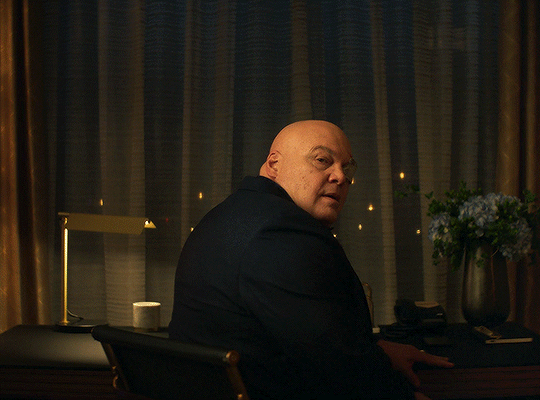

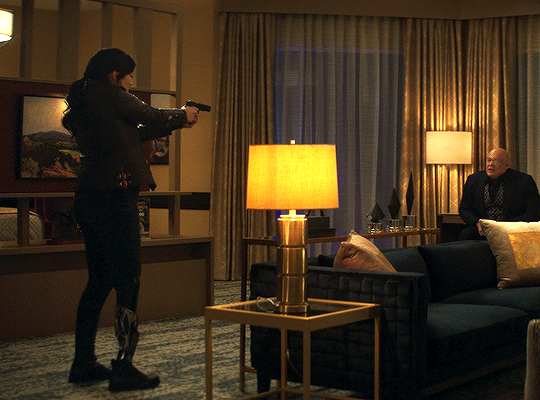

ECHO (2024) E04 | Taloa
#userelysia#marveledit#echoedit#tvedit#Echo#Maya Lopez#Wilson Fisk#Alaqua Cox#mine*#tbh the 1911 fits her so precisely i can't describe it#i love her so much#echo spoilers
487 notes
·
View notes
Text
I like how all the Ninja have their strengths. None of them are really "better" than anyone else, they know the same martial arts disciplines, and sure, often the writers have just had them mastering the same techniques all at the same time for efficiency's sake, but sometimes (especially in the later seasons) they show us how they all learn differently and are all the "strongest" in their own ways.
Cole is physically strong. He's surprisingly nimble for his build, but his strong suit is Pure Power. He can Pack a Punch and usually excels at things that require him to perform in short, yet powerful bursts.
Nya is the most in tune with her elemental power. It took her some time to get there, but once she found the right frequency, she quickly became the most dangerous elemental master in the world. Controlling the tides is like breathing to her.
Jay's strength is his creativity. He may not be the most in control of his power, the strongest, or that great at honing his skills in martial arts, but because he's able to think outside of the box, he finds ways to use his strengths that no one else on the team would even have considered.
Kai is the most disciplined when it comes to martial arts. The elemental stuff doesn't come that naturally to him, but he has a knack for picking up the technical skills really quickly, and so the elemental powers follow suit.
Zane is the most precise. He can't always master the most complex moves at first, but he never misses a target, and always knows where to strike to end fights quickly.
Lloyd is the most spiritually inclined. New mythical powers just grow on him like rashes. He works hard too, don't get me wrong, but if the moment calls for a new magic trick that hasn't been practiced in centuries he's your guy.
idk I just think it's neat that this is a thing they've kept pretty consistent throughout the multitude of seasons
#ninjago#vitpost#tho idk if my take on Zane and Jay r that in line w canon#but since Zane has always used precision weapons like shurikens and arrows I feel likd it fits#and Jay is an absolute weirdo that mostly proves useful in bizzaro situations#source: the wacko problem solving skills he applied in Skybound and Hunted
197 notes
·
View notes
Text
I love the way Glinda copies Fiyero…..’our first fight’->’let’s not quarrel’, the flower in hair move, the way she copies his moves in the Dancing Through Life scene. you knowww she wants to find the prettiest girl and give her a whirl
#much to think about re the lesbianism of this behaviour#glinda upland#wicked#actually i have so many thoughts abt the way she acts with fiyero vs elphaba#w him shes very calculayed and precise in taking the Passive Woman Who Is Pursued role#(shes not passive of course and shes not actually pursued)#(but she performs it so perfectly he knows exactly what hes supposed to do!)#while with Elphie. she slips very naturally and enthusiastically into a more active role#performing romantic gestures throwing her on beds and things and such#she wants to be a kind of fiyero ykwim#OH ANOTHER ONE#the deleted ‘you couldve picked me’ scene#fits so well into my thesis#all this to say glinda is a top?? no theres more to it than that!!#theres complex dykish gender systems. real ones understand me
70 notes
·
View notes
Text

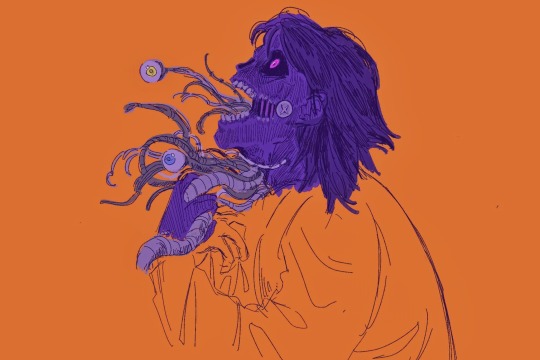
another one banished to wip hell
#fnaf#michael afton#me doods#argh using the tablet is more tiring than the laptop#less precise too so idk if i can finish this one#i was thinking of the eng cover of unravel when i was drawing this#'well now who could it be that lives inside of me?' like c'mon yall it fits#unravel is a michael afton song you heard it folks
770 notes
·
View notes
Text
so I made the mistake of brightening up this moment from the documentary and.... I want to die haha!

#the way omar fits right into his shoulders....#omar rudberg#edvin ryding#young royals forever#the idea of wilmon fitting each other perfectly and being made precisely for each other messes me up so bad#wilmon#young royals
74 notes
·
View notes
Note
MAX VERSTAPPEN IN YHE TRENCHES
HELLO HERE IS YOUR 17 YEAR OLD BOY READY FOR WAR

I didnt mean to color this and then I did????
drawing ask game, send me a driver + a century/decade/era!!!!
#im so happy w this honestly aaaaaaaaaaahhhhhhhhh#its so amazing when the ability to draw just hits precisely in the right way#I LOVE HIM#i was caption this smth absurd like: bro is NOT happy about the german occupation#he is in a belgian's private uniform btw 🥰🥰#isnt it so fitting that they had a lion on their helmet????? perfect.#also i could have put the chin strap over his chin like how its supposed to be#but its just too absurd 😭😭😭#and usually i go for the absurd but i have a personal vendetta considering i used to have to do the same for band#he looks so good in black and white aaaaahhh#max verstappen#f1#formula 1#mv1#catie.art.#catie.asks.
53 notes
·
View notes
Text

A MASTERLIST OF ALL THE BOOKS I COULD FIND IN TIM'S BOOKSHELVES
As someone who basically sees Tim Laughlin as my own version of Jesus Christ (I kind of wish I was lying but I have a 'beyond measure' tattoo branding my skin so perhaps I'm entirely serious), I simply needed to know what was on those shelves of his. And this was a hard task to achieve, believe me... but I got much farther than I initially thought I would.
(I've got so much to say about all of these books and how they might string together to create a deeper understanding of Tim as a character but I won't go into it here... maybe in a future post or video essay, who knows).
If you wish to help a girl out and attempt to figure out any of the other books I simply can not crack no matter how I look at the screenshots and mess with the adjustments... here's a folder full of 2k sized screenshots of those shelves.
Before I list the books one by one, I want to make a couple observations:
1) Almost all of the books I was able to pinpoint are non-fiction. The ones that aren't are children's books.
2) Topically, we see an interdisciplinary interest in:
History: from a book on a king in 4BC, to a survey of landholding in England in the 11th century.
Somewhat current historical events: books on World War I and II.
Western Philosophers: specially from the 16th to the 18th century.
Aesthetics: there's at least 2 books on the subject matter, but I couldn't find the second one, sadly.
Spirituality: not only christian/catholic; some of these books touch on Eastern practices such as Buddhism and Hinduism.
Fairy tales / children's books.
Psychology: specially in regards to mysticism and sexuality.
Science and scientific discovery/research.
3) A lot of the history, current events, and spirituality books are autobiographies/memoirs.
4) A lot of books (specially those on sciences and philosophy) tend to be more so anthologies or overviews on a subject matter rather than a book written by one specific author on one very concrete topic.
Overall, this all reflects very well an idea Jonathan Bailey himself expressed in a brilliant interview you can watch here if you haven't yet:
"Tim has buddhist flags in his 1980s flat in San Francisco, he has crystals, he is someone who is always seeking other ways to understand human experience. Which is probably tiring for him. Throughout the decades, he sort of appears as completely different people. At the crux of it there's this extreme grinding, contrasting, aggressive duality between feeling lovable and not feeling lovable. There's such shame in Tim. But it's the push and the pull which keeps him alive.”
This desire to understand human psychology, spirituality, and the ways of the universe through as many diverse lenses as possible, as well as a predilection for non-fiction, expresses very much to me that insatiable thirst for truth that defines his character so strongly.
OKAY, THAT BEING SAID. Here's the list in chronological order of publication.
PS. if you decided to click on any of the following titles it'd definitely not take you to a google drive link of the pdf file where you could download and read these books for yourself. Because that would be illegal and wrong.

Journeys through Bookland by Charles H. Sylvester (1901?) (1922 Edition)
I don't know which specific volume he owns, sorry, I tried my best but the number is not discernible (hell, the title barely is). If anyone wants the download link to these hmu because I'm not about to individually download all 10 right now.
10 volumes of poems, myths, Bible stories, fairy tales, and excerpts from children's novels, as well as a guide to the series. It has been lauded as ‘a new and original plan for reading, applied to the world’s best literature for children.’
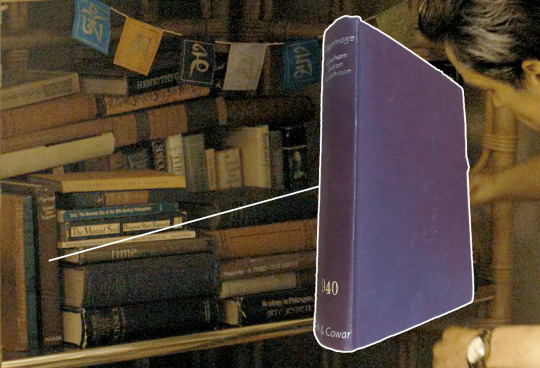
Pilgrimage by Graham Seton Hutchison (1936)
This book provides a view of the battlefields of WW I through the eyes of the average fighting man.
One curious thing about this book is that it's author, a British First World War army officer and military theorist, went on to become a fascist activist later in his life. Straight from Wikipedia:
"Seton Hutchison became a celebrated figure in military circles for his tactical innovations during the First World War but would later become associated with a series of fringe fascist movements which failed to capture much support even by the standards of the far right in Britain in the interbellum period." He made a contribution to First World War fiction with his espionage novel, The W Plan."

The Seven Storey Mountain by Thomas Merton (1948)
The Seven Storey Mountain tells of the growing restlessness of a brilliant and passionate young man, who at the age of twenty-six, takes vows in one of the most demanding Catholic orders—the Trappist monks. At the Abbey of Gethsemani, "the four walls of my new freedom," Thomas Merton struggles to withdraw from the world, but only after he has fully immersed himself in it. At the abbey, he wrote this extraordinary testament, a unique spiritual autobiography that has been recognized as one of the most influential religious works of our time. Translated into more than twenty languages, it has touched millions of lives.
This book requires no introduction. It's the one he keeps the Fire Island's postcard in and the one we see him re-reading in episode 8 after Hawk brings it to the hospital with him at the end of episode 7.
Just a little detail I noticed:
Apparently he liked the book so much he visited Gethsemani, which was the home of its author all the way up till 1968.


For all we know, he might have even met its author!

Sexual Behavior in the Human Male by Alfred Charles Kinsey, Wardell B. Pomeroy (1948)
When published in 1948 this volume encountered a storm of condemnation and acclaim. It is, however, a milestone on the path toward a scientific approach to the understanding of human sexual behavior. Dr. Alfred C. Kinsey and his fellow researchers sought to accumulate an objective body of facts regarding sex. They employed first hand interviews to gather this data. This volume is based upon histories of approximately 5,300 males which were collected during a fifteen year period. This text describes the methodology, sampling, coding, interviewing, statistical analyses, and then examines factors and sources of sexual outlet.
Yes, Charles Kinsey is indeed behind the Kinsey scale that has done so much for the LGBTQ+ community.

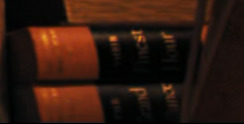
Their Finest Hour (1949), The Grand Alliance (1950), and Closing the Ring (1951) by Winston Churchill
Winston Churchill's six-volume history of the cataclysm that swept the world remains the definitive history of the Second World War. Lucid, dramatic, remarkable both for its breadth and sweep and for its sense of personal involvement, it is universally acknowledged as a magnificent reconstruction and is an enduring, compelling work that led to his being awarded the Nobel Prize for literature in 1953.

The European Philosophers from Descartes to Nietzsche by Monroe C. Beardsley (1960)
In so far as we reflect upon ourselves and our world, and what we are doing in it, says the editor of this anthology, we are all philosophers. And therefore we are very much concerned with what the twelve men represented in this book--the major philosophers on the Continent of Europe--have to say to us, to help us build our own philosophy, to think things out in our own way. For the issues that we face today are partly determined by the work of thinkers of earlier generations, and no other time is more important to the development of Western thought than is the 250-year period covered by this anthology. Monroe. C. Beardsley, Professor of Philosophy at Swarthmore College, has chosen major works, or large selections from them, by each man, with supplementary passages to amplify or clarify important points. These include: Descartes - Discourse on Method (Descartes), Thoughts (Pascal), The Nature of Evil (Spinoza), The Relation Between Soul and Body (Leibniz), The Social Construct (Rousseau), Critique of Pure Reason (Kant), The Vocation of Man (Fichte), Introducciton to the Philosophy of History (Hegel), The World as Will and Idea (Schopenhauer), A General View of Positivism (Comte), The Analysis of Sensations and the Relation of the Physical to the Psychical (Mach), Beyond Good and Evil (Nietzsche).
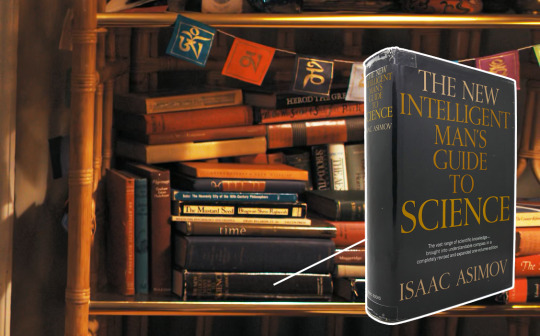
The New Intelligent Man's Guide to Science by Isaac Asimov (1965)
Asimov tells the stories behind the science: the men and women who made the important discoveries and how they did it. Ranging from Galilei, Achimedes, Newton and Einstein, he takes the most complex concepts and explains it in such a way that a first-time reader on the subject feels confident on his/her understanding. Assists today's readers in keeping abreast of all recent discoveries and advances in physics, the biological sciences, astronomy, computer technology, artificial intelligence, robotics, and other sciences.

The Heavenly City of the 18th Philosophers by Carl L. Becker (1932) (1962 reprint)
Here a distinguished American historian challenges the belief that the eighteenth century was essentially modern in its temper. In crystalline prose Carl Becker demonstrates that the period commonly described as the Age of Reason was, in fact, very far from that; that Voltaire, Hume, Diderot, and Locke were living in a medieval world, and that these philosophers “demolished the Heavenly City of St. Augustine only to rebuild it with more up-to-date materials.” In a new foreword, Johnson Kent Wright looks at the book’s continuing relevance within the context of current discussion about the Enlightenment.
I find the particular choice of adding this book very curious and on brand, since it explores the idea that philosophers of the Enlightenment very much resembled religious dogma/faith in their structure and purpose. Just... A+ of the props department to not just add any kind of book on philosophy anthology.

Herod The Great by Michael Grant (1971)
The Herod of popular tradition is the tyrannical King of Judaea who ordered the Massacre of the Innocents and died a terrible death in 4 BC as the judgment of God. But this biography paints a much more complex picture of this contemporary of Mark Antony, Cleopatra, and the Emperor Augustus. Herod devoted his life to the task of keeping the Jews prosperous and racially intact. To judge by the two disastrous Jewish rebellions that occurred within a hundred and fifty years of his death -- those the Jews called the First and Second Roman Wars -- he was not, in the long run, completely successful. For forty years Herod walked the most precarious of political tightropes. For he had to be enough of a Jew to retain control of his Jewish subjects, and enough of a pro-Roman to preserve the confidence of Rome, within whose territory his kingdom fell. For more than a quarter of a century he was one of the chief bulwarks of Augustus' empire in the east. He made Judaea a large and prosperous country. He founded cities and built public works on a scale never seen before: of these, recently excavated Masada is a spectacular example. And he did all this in spite of a continuous undercurrent of protest and underground resistance. The numerous illustrations presents portraits and coins, buildings and articles of everyday use, landscapes and fortresses, and subsequent generations' interpretations of the more famous events, actual and mythical, of Herod's career.

Readings in the Philosophy of Art and Aesthetics compiled by Milton Charles Nahm (1975)
A college level comprehensive anthology of essays written on the arts and the field of aesthetic philosophy.

The Mustard Seed: Discourses on the Sayings of Jesus Taken from the Gospel According to Thomas by Bhagwan Shree Rajneesh (1975)
This timely book explores the wisdom of the Gnostic Jesus, who challenges our preconceptions about the world and ourselves. Based on the Gospel of Thomas, the book recounts the missing years in Jesus’ life and his time in Egypt and India, learning from Egyptian secret societies, then Buddhist schools, then Hindu Vedanta. Each of Jesus' original sayings is the "seed" for a chapter of the book; each examines one aspect of life — birth, death, love, fear, anger, and more — counterpointed by Osho’s penetrating comments and responses to questions from his audience.
(You don't know how fulfilling it was to find some of these books and just sit there like "oh my god, yessss, he'd SO read that".)
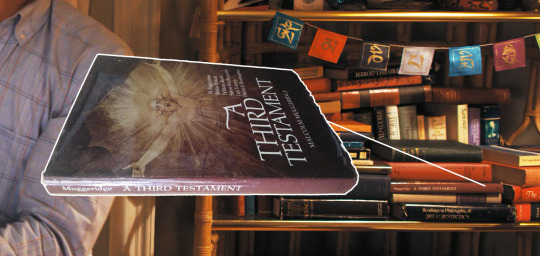
A Third Testament by Malcolm Muggeridge (1976)
A modern pilgrim explores the spiritual wanderings of Augustine, Pascal, Blake, Kierkegaard, Dostoevsky, Tolstoy, and Bonhoeffer. A Third Testament brings to life seven men whose names are familiar enough, but whose iconoclastic spiritual wanderings make for unforgettable reading. Muggeridge's concise biographies are an accessible and manageable introduction to these spiritual giants who carried on the testament to the reality of God begun in the Old and New Testaments. - St. Augustine, a headstrong young hedonist and speechwriter who turned his back on money and prestige in order to serve Christ - Blaise Pascal, a brilliant mathematician who pursued scientific knowledge but warned people against thinking they could live without God - William Blake, a magnificent artist-poet who pled passionately for the life of the spirit and warned of the blight that materialism would usher in - Soren Kierkegaard, a renegade philosopher who spent most of his life at odds with the church, and insisted that every person must find his own way to God - Fyodor Dostoevsky, a debt-ridden writer and sometime prisoner who found, in the midst of squalor and political turmoil, the still small voice of God - Leo Tolstoy, a grand old novelist who swung between idealism and depression, loneliness and fame and a duel awareness of his sinfulness and God s grace - Dietrich Bonhoeffer, a pastor whose writings and agonized involvement in a plot to kill Hitler cost him his life, but continue to inspire millions
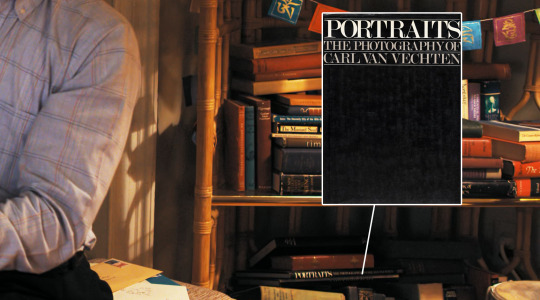
Portraits: The photography of Carl Van Vechten (1978)
Can't find a file but you can borrow it from archive.com in the link provided.
During his career as a photographer, Carl Van Vechten’s subjects, many of whom were his friends and social acquaintances, included dancers, actors, writers, artists, activists, singers, costumiers, photographers, social critics, educators, journalists, and aesthetes. [...] As a promoter of literary talent and a critic of dance, theater, and opera, Carl Van Vechten was as interested in the cultural margin as he was in the day’s most acclaimed and successful people. His diverse subjects give a sense of both Carl Van Vechten’s interests and his considerable role in defining the cultural landscape of the twentieth century; among his many sitters one finds the leading lights of the Harlem Renaissance, the premier actors and writers of the American stage, the world’s greatest opera stars and ballerinas, the most important and influential writers of the day, among many others.
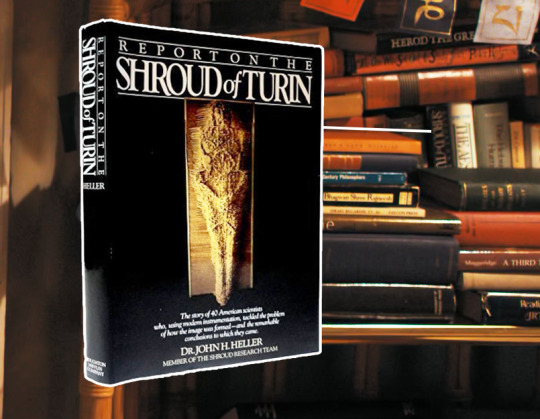
Report of the Shroud of Turin by John H Heller (1983)
Heller, while a man of science, was nevertheless a devout man (Southern Baptist). He viewed his task concerning The Shroud with great scepticism; there have been far too many hoaxes in the world of religion. The book describes in great detail the events leading up to the team's conviction that the Shroud was genuine; last - not least - being Heller and Adler's verification of "heme" (blood) and the inexplicable "burned image" of the crucified man. Although carbon dating indicates that the image is not 2000 years old and that the cloth is from the Middle Ages, there is not enough evidence to disprove Heller's assertion that the Shroud is indeed genuine.
Context for those who may not know (though I doubt it's necessary): The shroud of Turin "is a length of linen cloth that bears a faint image of the front and back of a man. It has been venerated for centuries, especially by members of the Catholic Church, as the actual burial shroud used to wrap the body of Jesus of Nazareth after his crucifixion, and upon which Jesus's bodily image is miraculously imprinted."
It is a very controversial subject matter and I definitely don't know that from going to an Opus Dei school since the day I was born till the day I graduated high school.

Mysticism, Psychology and Oedipus by Israel Regardie (1985)
I've tried my hardest but despite many Israel Regardie books being on the world wide web, I can't find a copy of this specific one.
Mysticism, Psychology and Oedipus, from the Small Gems series is one of these mysterious alchemys which Regardie and Spiegelman crafted for the serious student of mysticism. Mysticism, Psychology and Oedipus by Dr. Israel Regardie and his friend, world renowned Jungian Psychologist, J. Marvin Spiegelman, Ph.D. was created to reach the serious student at the intersecting paths of magic, mysticism and psychology. While each area of study overlaps they also maintain their own individual paths of truth. One of Regardie’s greatest gifts was his rare ability to combine these difficult and diverse subjects and make them understandable.
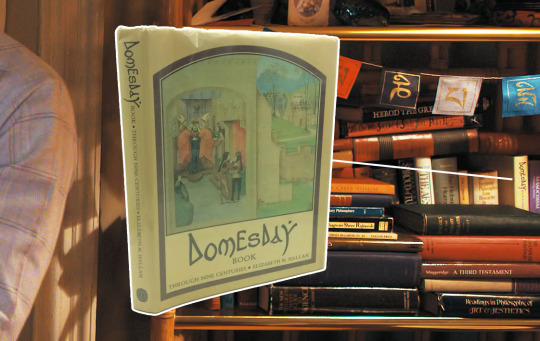
Domesday Book Through Nine Centuries by Elizabeth M. Hallam (1986)
In 1086 a great survey of landholding in England was carried out on the orders of William the Conqueror, and its results were recorded in the two volumes, which, within less than a century, were to acquire the name of Domesday, or the Book of Judgment 'because its decisions, like those of the last Judgment, are unalterable'. This detailed survey of the kingdom, unprecedented at that time in its scope, gives us an extraordinarily vivid impression of the life of the eleventh century.
The following two are a fuck up on the props department part because they were published after 1987 but we'll forgive them because they were not expecting for me to do all this to figure out the titles of these books, I'm sure:
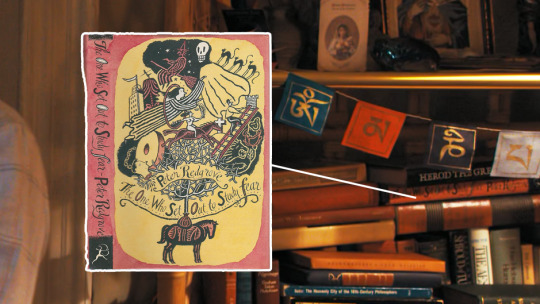
The One Who Set Out to Study Fear by Peter Redgrove (1989)
This book barely exists physically, rest assured it does not exist online... LOL.
The author of The Wise Wound presents here a re-telling of Grimm's famous fairy tales, written in a manner and spirit more suited to the present day. Each story is rooted in the original, but cast in an energetic style that is both disrespectful and humorous.
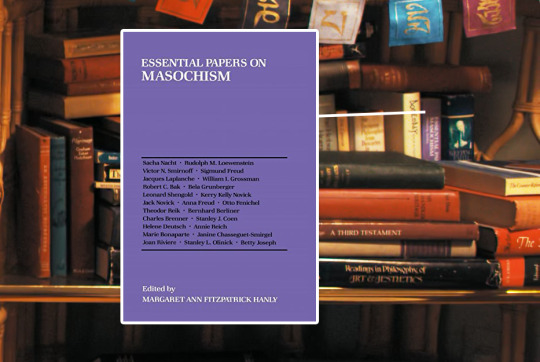
Essential Papers on Masochism by Margaret Ann Fitzpatrick Hanly (1995)
The contested psychoanalytic concept of masochism has served to open up pathways into less-explored regions of the human mind and behavior. Here, rituals of pain and sexual abusiveness prevail, and sometimes gruesome details of unconscious fantasies are constructed out of psychological pain, desperate need, and sexually excited, self- destructive violence. In this significant addition to the "Essential Papers in Psychoanalysis" series, Margaret Ann Fitzpatrick Hanly presents an anthology of the most outstanding writings in the psychoanalytic study of masochism. In bringing these essays together, Dr. Fitzpatrick Hanly expertly combines classic and contemporary theories by the most respected scholars in the field to create a varied and integrated volume. This collection features papers by S. Nacht, R. Loewenstein, Victor Smirnoff, Sigmund Freud, Jacques Laplanche, Robert Bak, Leonard Shengold, K. Novick, J. Novick, S. Coen, Margaret Brenman, Esther Menaker, S. Lorand, M. Balint, Bernhard Berliner, Charles Brenner, Helene Deutsch, Annie Reich, Marie Bonaparte, Jessica Benjamin, S.L. Olinick, Arnold Modell, Betty Joseph, and Janine Chasseguet-Smirgel.
Let's not forget another book we know has been present in his shelves at some point:

Look Homeward, Angel by Thomas Wolfe (1929)
It is Wolfe's first novel, and is considered a highly autobiographical American coming-of-age story. The character of Eugene Gant is generally believed to be a depiction of Wolfe himself. The novel briefly recounts Eugene's father's early life, but primarily covers the span of time from Eugene's birth in 1900 to his definitive departure from home at the age of 19. The setting is a fictionalization of his home town of Asheville, North Carolina, called Altamont in the novel.
And Ron Nyswaner mentioned in a podcast (might be this one? I'm not sure) that he scrapped from the script a line where Tim recommends this poem at some point:

He specially emphasized the line "If equal affection cannot be, Let the more loving one be me".
And lastly, if anyone wanted to know:
His copy of the bible is the Revised Standard Version by Thomas Nelson from either 1952 or 1953.
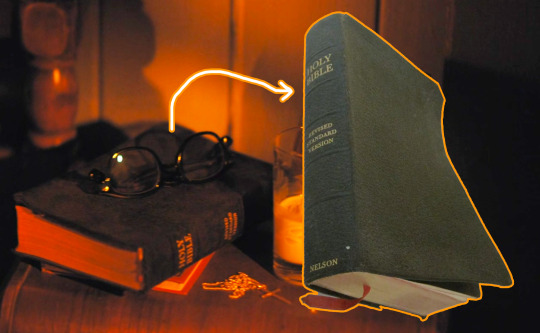
Because why the hell not figure out what specific translation of the holy bible a fictional character was basing his beliefs on — as if the set designers cared nearly as much as I do.
#fellow travelers#fellow travelers meta#tim laughlin#fellowtravelersedit#i know it doesnt precisely fit the tag but hey.. theres a gif right there#this is such a jobless thread... but i AM jobless
151 notes
·
View notes
Text
After I did that Professor Layton To Be a Princess video, I've been thinking of who would be whom if I tried to cast all the Layton characters in it, and it's hard to decide for most of them, but one choice is certain: Descole would be Preminger
And the image of it was stuck in my head so I ended up making this with Flipnote Studios on my DSi:
(in case you're curious, Preminger was voiced by none other than Martin Short in what was possibly one of his best performances ever and I mean that quite seriously)
The original scene is here
Transcript:
Layton/Julian: Perhaps I can help you look for her?
Descole/Preminger: Why don't you stick to your books, school boy. Wouldn't that be fun? AHAHAHAHA!
#professor layton#barbie as the princess and the pauper#jean descole#Now I want to do something with Descole and 'How Can I Refuse?'#Also for the rest of the cast I've been thinking:#Annaleise=Flora#Erika=Luke? (because of the to be a princess/gentleman thing but also he's blue and talks to animals and Erika sings to her cat)#(otherwise maybe Aurora would be a better fit)#Knick and Knack=Raymond and Jakes#Serfina=Claudia#Wolfie=Keats??#Dominic I am kind of stuck on...#If Aurora is Erika then maybe he could be Luke.#or Clive....... hm... no...#this was actually really annoying to make because of poor choices on my part meaning I had to redo things#but it turned out better than I'd hoped#I mean there's only so much precision you can get on a DS screen with a stylus#my videos
33 notes
·
View notes
Text
So far my favorite of Gilberts personal traits is how he's always ready to start blasting. There's actual danger? Gun time. His colleagues are manipulated to attack him? Gun. A teenage girls threw a pillow at him in frustration? Pulls out a gun
#love how mochizukis idea of fitting a 24 yo man with 2 other teenage leads was to make him match their level of immaturity with precision#...and a gun#ph reread
20 notes
·
View notes